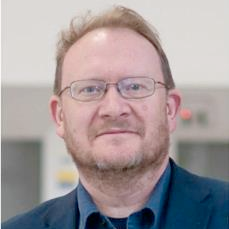Synergy between Main Group and Transition Metal Chemistry
A special issue of Inorganics (ISSN 2304-6740).
Deadline for manuscript submissions: closed (30 November 2022) | Viewed by 14793
Special Issue Editors
Interests: homogeneous catalysis; organometallic chemistry; phosphorus chemistry; C–H activation; rare-earth chemistry
Special Issues, Collections and Topics in MDPI journals
Special Issue Information
Dear Colleagues,
Modern Inorganic Chemistry is split up into many fields, including Solid-State Chemistry, Bioinorganic Chemistry, and Heterogeneous Catalysis to name but a few. Two core areas of Inorganic Chemistry that have been of huge importance over the last 50 years are Transition Metal Chemistry, focusing on the d-block metals, and Main Group Chemistry, which studies the s- and p-block elements. In the 21st century, we see huge potential in discovery groundbreaking results from the combination of different fields of chemistry driven by the different properties and advantages that can be exploited from different areas of the periodic table as well as the different approaches that each sub-field takes. This Special Issue explores the idea of synergy between transition metal and main group systems, which is likely to be of increasing importance as many more new reactions and species are discovered. This includes improved homogeneous catalysts that exploit the active participation of ligands in the catalytic cycle (p-block chemistry combined with traditional reactivity modes of the late transition metals), borylation reactions (driven by transition metal boryl species), and many others.
For this Special Issue, we are seeking to showcase the extent and depth of current research that combines main group and transition metal chemistry. Often, this can utilize organometallic chemistry as the bridge between these fields, but this is not exclusive. Therefore, we invite you to contribute papers that will be openly accessible, allowing your research to inform and influence the scientists working in these areas to help push the boundaries between these exciting areas.
Dr. Stephen Mansell
Prof. Dr. Simon Aldridge
Guest Editors
Manuscript Submission Information
Manuscripts should be submitted online at www.mdpi.com by registering and logging in to this website. Once you are registered, click here to go to the submission form. Manuscripts can be submitted until the deadline. All submissions that pass pre-check are peer-reviewed. Accepted papers will be published continuously in the journal (as soon as accepted) and will be listed together on the special issue website. Research articles, review articles as well as short communications are invited. For planned papers, a title and short abstract (about 100 words) can be sent to the Editorial Office for announcement on this website.
Submitted manuscripts should not have been published previously, nor be under consideration for publication elsewhere (except conference proceedings papers). All manuscripts are thoroughly refereed through a single-blind peer-review process. A guide for authors and other relevant information for submission of manuscripts is available on the Instructions for Authors page. Inorganics is an international peer-reviewed open access monthly journal published by MDPI.
Please visit the Instructions for Authors page before submitting a manuscript. The Article Processing Charge (APC) for publication in this open access journal is 2700 CHF (Swiss Francs). Submitted papers should be well formatted and use good English. Authors may use MDPI's English editing service prior to publication or during author revisions.
Keywords
- organometallic chemistry
- homogeneous catalysis
- synergistic effects
- transition metal chemistry
- main group chemistry






